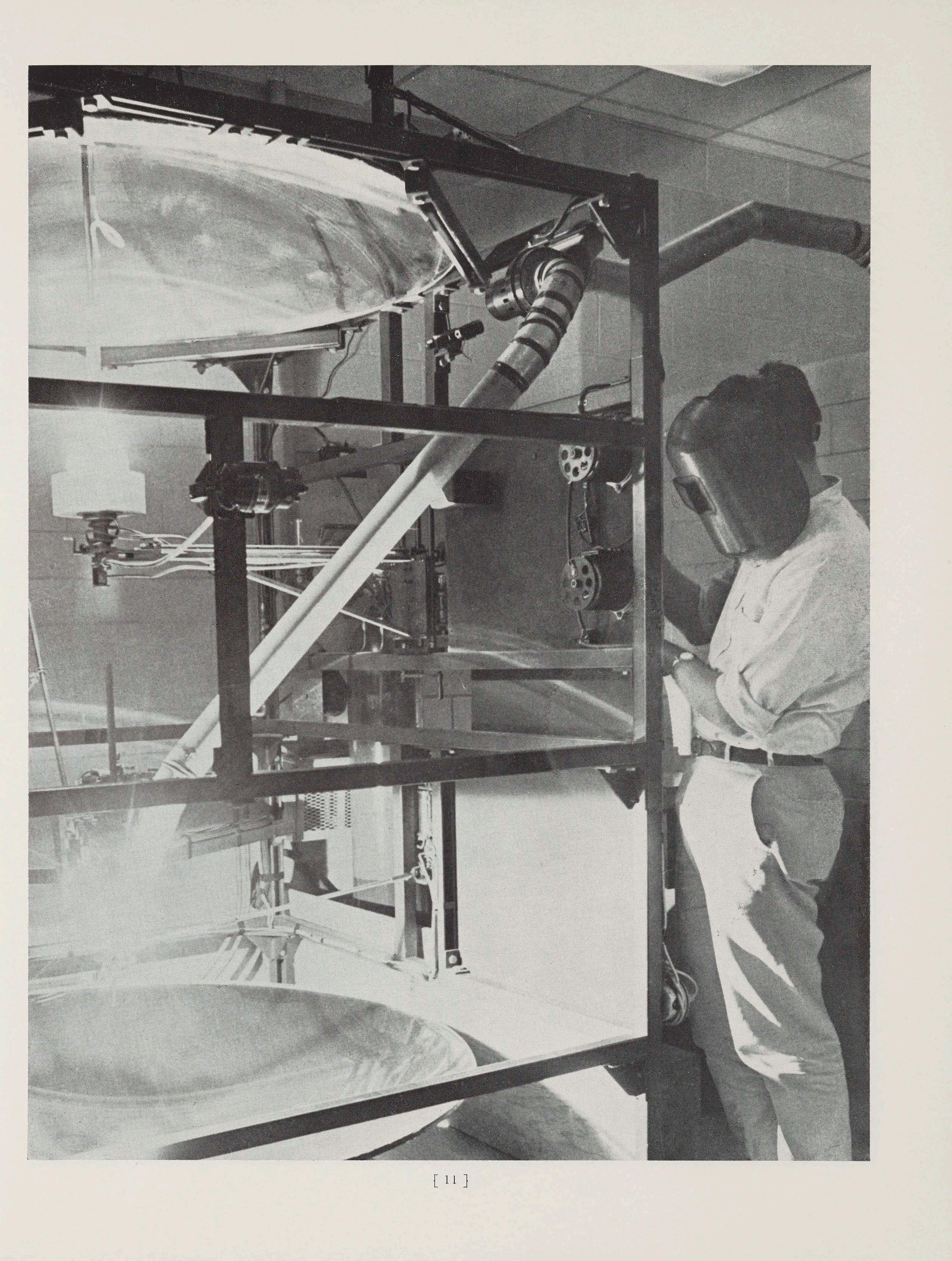
4 minute read
U. of R. Welcomes Neighbor
By RANDOLPH H. WALKER, '60
The University of Richmond extended the hand of welcome to a new neighbor this fall.
The newcomer is the Virginia Institute for Scientific Research, which in 1963 swung into full operation on 15 acres at the southern tip of the Univer ~ity's property near River Road.
Three nationally known scientists came to share their knowledge with the University 's scientific community at a symposium in honor of the Institute .
Leading slate of speakers was Dr. Carroll M. Williams, '37, former chairman of the biology department of Harvard University, who is now devoting most of his time to research. Other speakers were Dr. Clifford G. Shull, professor of physics at Massachusetts Institute of Technology, and Dr. William R. Krigbaum, professor of chemistry at Duke University.
The scientists were invited to speak by th-e science deparitments of the University, which was host to the symposium. "We could think of no more appropiate way to welcome to the campus our new neighbors than a science symposium ," said Dr. James E. Worsham , associate professor of chemistry and chairman of the arrangements committee.
October 18 dawned crisp and clear, and at 9 a.m. chemists, physicists and biologists from all parts of Virginia gathered at Dennis Auditorium , in the University 's School of Business Administration. On hand to greet the visitors were the staff members of the University's science departments as well as
Headquarters of the Virginia Institute for Scientific Research (above) were dedicated on October 3, 1963 and n-amed in honor of Dr. Allen T. Gwathmey. At the left, Dr. Billy W . Sloope (kneeling), senior research physicist for the Institute and a member of the University of Richmond faculty, and Calvin 0 . Tiller work with an ultra high vacuum apparatus in one of the VISR laboratories . On the facing page, a research assistant works with an arc image furnace which develops temperatures up to 5,000 degrees centigrade .
Dr. Henry Leidheiser, Jr., director of the VISR, and members of his staff.
Lectures by the visiting scientists began shortly after the welcoming remarks, and the visitors heard Dr . Williams outline in his address a new method of killing insects.
The new method, a result of his latest research, could, he said, "save American farmers hundreds of millions of dollars." The insect, the biologist said, can be persuaded through the use of artificial light in the midst of winter that "spring has arrived." Unable to cope with the winter 's cold, he added, the insect dies- a victim of environmental or "ecological suicide."
He had discovered, he said, that built-in computers in the brains of insects measure the duration of light and bring inse<;ts back to life after their winter hibernation . The computer would not be able to cope with the artificial light treatment , he said. "When the computer tells the insect's hormones to flow, he explained, "there is nothing the computer or the hormones can do then to sitop that flow."
The biologist noted that DDT has "lost its effectiveness" because resistant strains of insects are developing. "A most energetic search is under way, he said, "for novel approaches to the control of insect pests. It seems that the insect hormones may have a brand-new role to play." [10)
The Harvard biologist had given up a consultation with a subcommittee of the President's Scientific Advisory Committee in Washington , D. C., so that he could attend the symposium a:t the University of Richmond.
In the audience was the man who had started Dr. Williams on his career as a biologist- Dr . Robert F. Smart, dean of Richmond College.
After graduating from the University in 1937, Dr . Williams attended Harvard and the Harvard Medical School where he received a Ph.D. and an M. D. degree. He is still remembered at the University of Richmond for a butterfly collection that is still or:e of the biology department's prize possess10ns.
The scientists were guests of the University at a luncheon in the refectory. Lectures resumed after the luncheon and continued until 4 p.m. when the guests toured the new facilities of VISR.
The symposium followed by two weeks the formal dedication of the VISR building, which has been named the Allan Talbott Gwathmey research laboratory, in honor of the late scientist who was president of the Institute for 15 years. The speaker for the dedication was Dr . Julius A. Stratton, president of Massachusetts Institute of Technology, who was enthusiastic in his praise of the Institute. "The small research institute can perform pace-setting science and awaken student interest in scientific careers," he said in his dedicatory address. "We need the big equipment and institutions but the small institutions are a part of our cu,lture and definitely can contribute."
The establishment of the scientific research organization on the University campus has been hailed by University President George M. Modlin as "highly gratifying," and by Dr. Leidheiser as "extremely beneficial to the Institute, the University, and the public." "The symposium was a complete success," said Dr. Worsham, who was spokesman for the University scientists in welcoming the VJSR. "Many benefits wi]1l result from having the VISR on the campus," he said, "including the assistance the Institute can give the University 's growing graduate program, special laboratory space for graduate students, and the use of special equipment not owned by the University . "We hope the warm relations between the VISR and the University wi.Jl be a permanent part of campus life," said Dr . Worsham .






